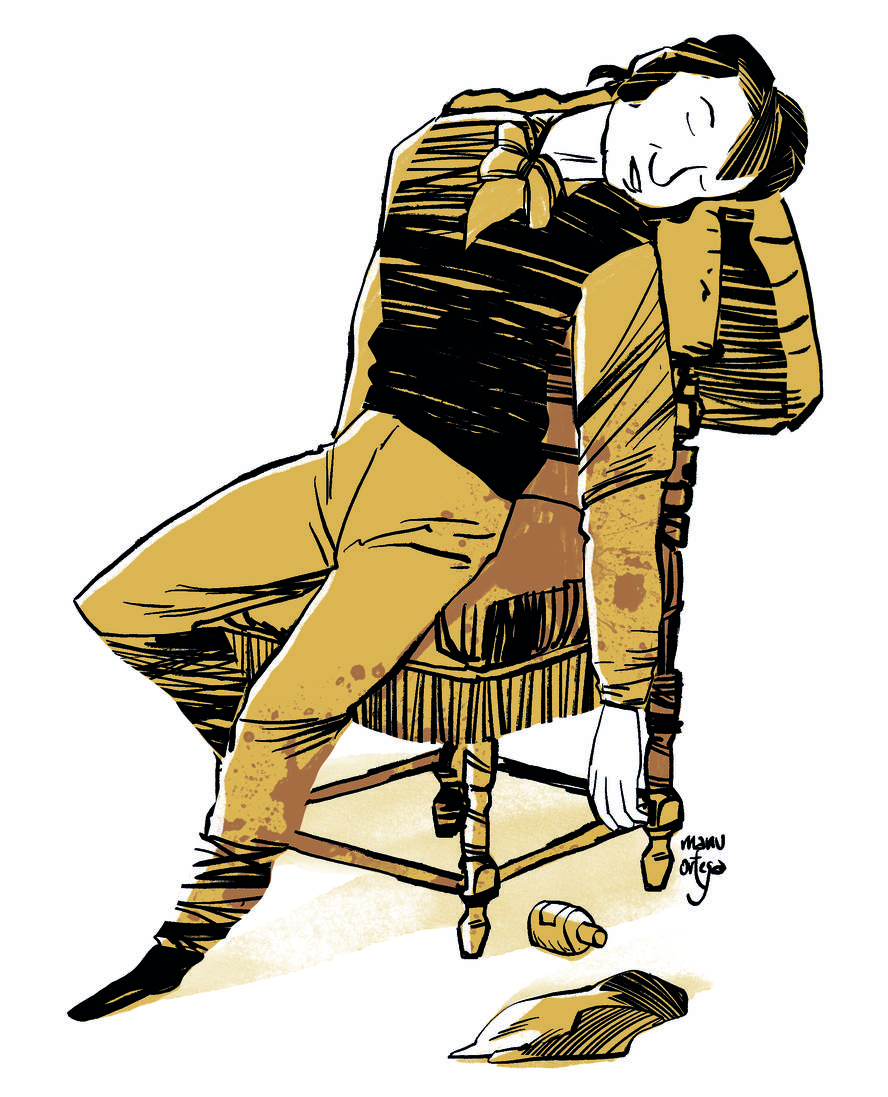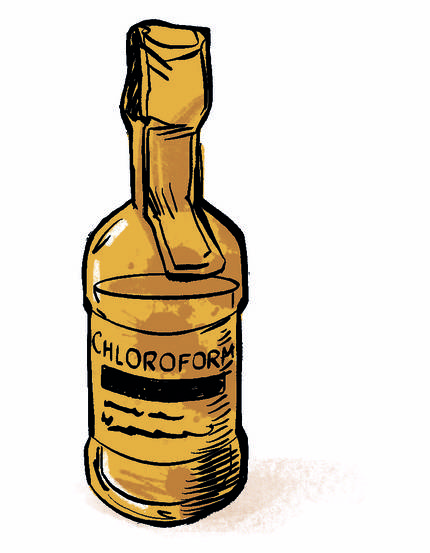James Young Simpson: Painless Delivery
4 November 1847, Edinburgh. As usual, in the dark, Simpson himself and two friends met at James Young Simpson's house. They were looking for an effective anesthetic and had a simple research method: they inhaled a specific substance and analyzed its effects. By then they already had acetone, benzine, ethyl nitrate, iodine vapor, chlorinated hydrocarbons, differences between daughters, etc. This time it was the chloroform turn.
At first they felt good humor and joy, but soon all three of them plummeted. They did not regain consciousness until the next morning. As soon as he woke up, he realized he found Simpson.
It was only one year since William Morton demonstrated the anesthetic power of Boston ether. In Europe, Robert Liston made known that “Yankee trick”. Simpson was a student of Liston and attended the demonstration and was fascinated. He soon realized how important it could be for his area. Simpson was an obstetrician and knew the suffering of labor.
Two months after Liston's exhibition on April 19, 1847, he first tested ether in a complicated delivery. From then on, he strongly advocated the use of anesthesia in births. However, ether was flammable, slow, irritating to the lungs and provoking vomiting.
In the summer of 1847 he began to look for a better anesthetic. They were lucky with chloroform. If they had inhaled it a little more, it wouldn't affect them, and if they had overtaken it, they couldn't tell. But they did well, and soon he started working with chloroform Simpson.
On 8 November he used it for the first time in a delivery. He collected his experience as follows: “Three and a half hours after delivery, before the end of the first stage, I subjected him to chloroform, wet a teaspoon of fluid a rounded funnel cloth and surrounding the mouth and nostrils with the open end of the funnel. When the fluid evaporated, about ten or twelve miles was renewed. The child came out within 25 minutes of inhalation.”
“Then he came back to me and told me that I slept very comfortable and that I also needed it, because I felt so tired that I could not deal with his work... When the nurse brought her baby, it was not hard for us to convince the mother that she was very perplexed that the delivery was over and that she was the child.”
Being better as an anesthetic than ether, chloroform spread. Its use for semiations was not well seen and had many opponents. The suppression of labor pain was contrary to the will of God, which Genesia said: “He told the woman: I’m going to multiply the pains of your births and give your children pain.”
Many doctors accepted that in some cases an extraordinary intervention was made, but for normal births they did not see it necessary, since labor pain was natural.
For his part, Simpson was clear that this suffering of women had to be brought to an end. After four years using chloroform, he writes: “I am increasingly at ease with the use of chloroform in the midwife, and sometimes I wonder how our grandchildren are going to receive the confrontation that is being this.”
In addition to anesthesia, the Edinburgh obstetrician contributed more. For example, he stressed the importance of monitoring the fetal heartbeat, among other things because he observed that damping the heartbeat is often a sign of fetal risk. And he suggested that childbirth could save the child's life in some risk cases.
He invented Simpson’s forceps, much better than the existing ones, and they were used long after. He also invented an extraction device by absorption, precursor of the obstetric suction cup, one hundred years before the development of the suction cups.
He also committed himself to integrating midwives into hospitals. And he paid a lot of attention to the infections of the celebrations. Puerperal fever caused half of maternal deaths. Simpson deduced that postoperative fever and postoperative fever were similar and both were very contagious. And he argued that disinfection of hands and instruments by doctors could considerably reduce these infections.
He warned of the negative consequences of excessive patient accumulation in hospitals and showed that mortality rates were closely related to poor hospital conditions and postoperative infections were closely related to inadequate hospital design, poor ventilation and management problems. And it was necessary to build better hospitals.
And he also researched other issues, like hermaphroditism, a totally taboo subject at the time. Also archaeology. He also analyzed the ideas of the creator of the meopathy Samuel Hahnemann. He concluded that they had no basis.
However, chloroform was the one that sounded the most. Despite its great rivalry, it was spreading through Scotland to use it in childbirth. And more and more women came to Simpso, even from abroad.
On 7 April 1953, Dr John Snow granted Queen Vikto half of Prince Leopoldo. Then criticism was silenced.







